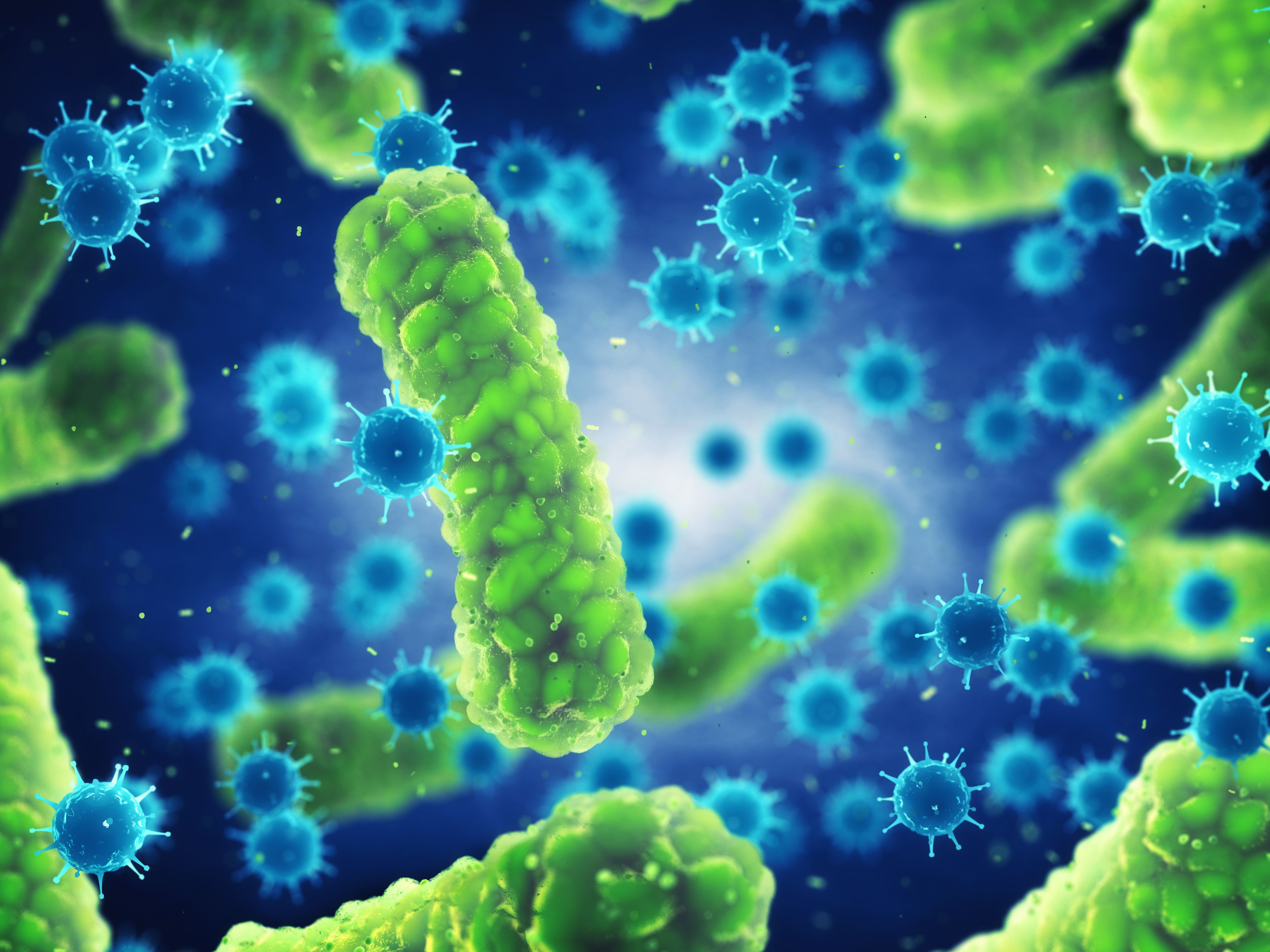Known and Novel Proteins in Pseudomonas stutzeri Detected by Bottom-Up Proteomics
The combination of the “bottom-up” approach with digest-free, direct-sequencing proteomics, along with the addition of a proteogenomics pipeline that identified missing data, yielded the determination of almost 3000 proteins.
Researchers in Germany and Switzerland have collaborated on a recently published study that sought more information on small proteins, some with as few as 50 amino acids (aa) in length, in the human pathogen Pseudomonas stutzeri (P. stutzeri) (1). A multi-step process was devised that the team collectively said would expand the potential for the identification of such proteins, especially those novel and unknown, within the mass spectrometry (MS) toolbox.
Pathogenic bacteria and viruses , Microscopic germs that cause infectious diseases , Viral and bacterial infection | Image Credit: © nobeastsofierce

The study, which appeared in the journal Analytical Chemistry, made use of what is called “bottom-up” proteomics analysis—proteomics being the study of the structures and behaviors of, and interactions between, certain proteins. Also referred to by the moniker “shotgun,” bottom-up proteomics digests intact proteins into peptides before analysis by a mass spectrometer, while what is called the “top-down” approach ionizes proteins directly.
The top-down method was, however, also deployed here because as the researchers explained, a direct-sequencing workflow would stand to provide advantages over bottom-up analysis alone, not the least of which was identification of small proteins that would not be able to be made after a tryptic digest or digest with another protease (1). The combined processes of bottom-up proteomics and digest-free, direct-sequencing proteomics were then further augmented by the application of a custom proteogenomics database that the researchers said contained both annotated proteins and potentially novel proteoforms.
The selection of P. stutzeri for this experiment reflects this bacteria’s status within the genus Pseudomonas, which is described by the authors as typically “Gram-negative bacteria with high metabolic diversity” (1). P. stutzeri is a close relative of Pseudomonas aeruginosa, certain strains of which were recently named highest-priority critical pathogens by the World Health Organization (WHO) because of their ability to spread widely and opportunistically, including in approximately 10% of hospital-borne infections (also known as healthcare-associated infections or nosocomial infections). Successful analysis using the combined methods selected here could, according to the research team, suggest the overall workflow could be applied to further study of prokaryotes in general.
Not only did direct sequencing permit higher sequence coverage in the detection of small proteins within P. stutzeri (up to 100% higher, as the researchers found), it also yielded more spectral counts. Additionally, three novel small proteins uniquely identified by direct sequencing were predicted to form an operon and may indicate de novo genes (1). Overall, 2950 proteins were determined in this process—2921 of them known and another 29 novel.
Identifying specific proteins in a human pathogen using liquid chromatography-mass spectrometry (LC–MS) is important for several reasons. First, it aids in understanding the pathogen's molecular makeup, enabling targeted drug development. Second, it helps identify potential virulence factors and drug targets, improving our knowledge of the infection's mechanisms. Third, such identification enables the development of accurate diagnostic tools, for early detection and patient management. Finally, studying pathogen proteins provides insights into host-pathogen interactions, and on the immune response, thus aiding vaccine design.
Of those nearly 3000 proteins, which the researchers said satisfied more than 70% of the theoretical proteome, 176 small proteins were identified (small proteins in this instance measuring under 100 aa) (1). And among that amount, 160 were annotated proteins and the other 16 were considered novel. With novel small protein identification becoming an area of mass spectrometry that the authors said is gaining momentum, their work reflects the feasibility of combining several items in the MS toolbox to fuel comprehensive detection and analysis.
Reference
(1) Meier-Credo, J.; Heiniger, B.; Schori, C.; Rupprecht, F.; Michel, H.; Ahrens, C. H.; Langer, J. D. Detection of Known and Novel Small Proteins in Pseudomonas stutzeri Using a Combination of Bottom-Up and Digest-Free Proteomics and Proteogenomics. Anal. Chem. 2023, 95 (32), 11892–11900. DOI: 10.1021/acs.analchem.3c00676
Investigating PFAS in Plastic Food Storage Bags Using LC–MS/MS
May 8th 2024Yelena Sapozhnikova from the United States Department of Agriculture spoke to The Column about her innovative research investigating PFAS in plastic food storage bags using targeted and non-targeted liquid chromatography–tandem mass spectrometry.